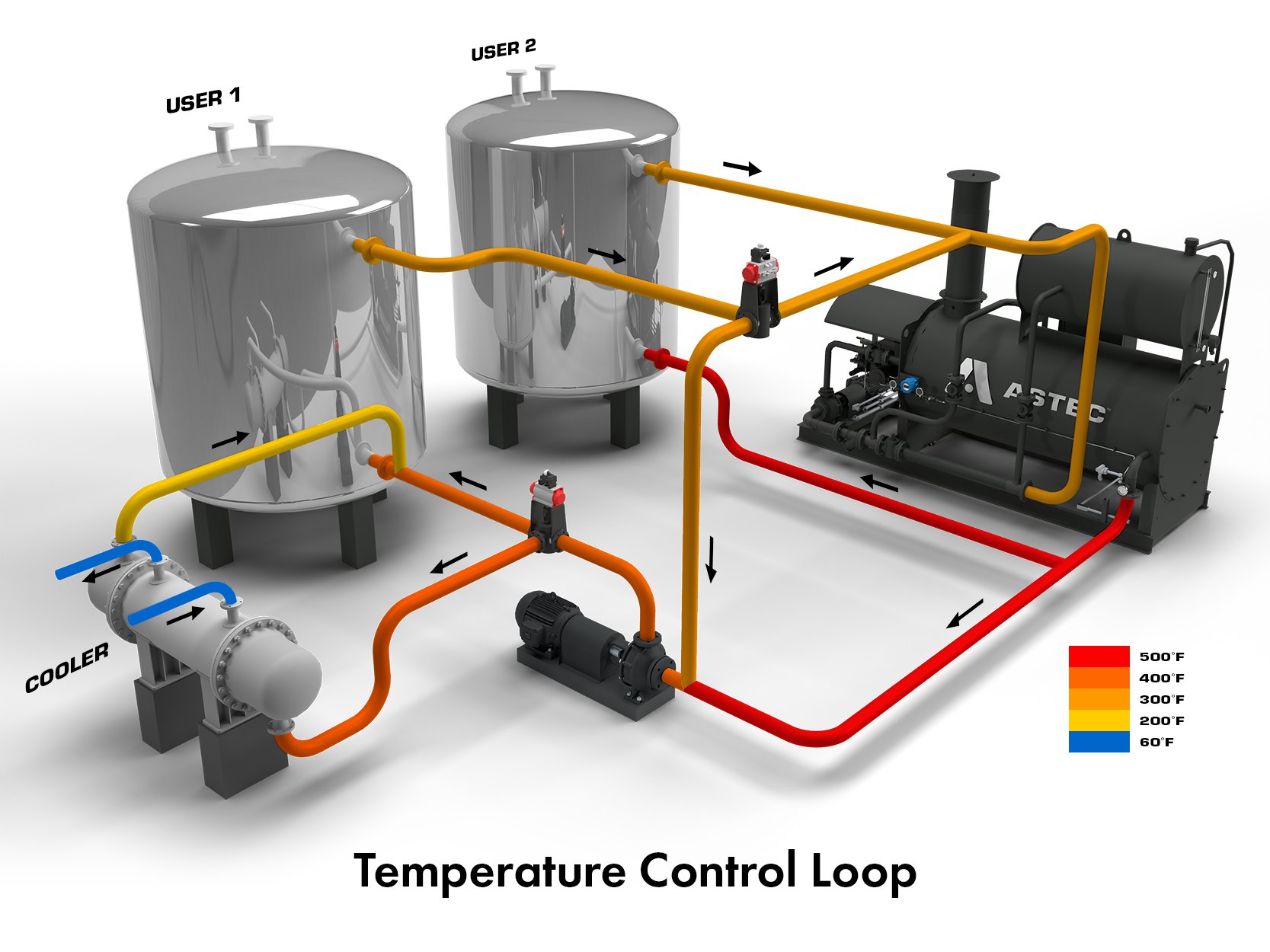Behind the Scenes of Advanced CFD Modeling in DVS Heat Transfer Systems
Wiki Article
A Comprehensive Guide to Choosing the Right Heat Transfer Solutions for Your Requirements
Choosing the appropriate Heat transfer system is important for functional efficiency. Numerous systems deal with various requirements, affected by factors such as temperature variety and fluid kind. Recognizing the principles behind Heat transfer, such as conduction, radiation, and convection, is crucial. Additionally, reviewing power sources and upkeep methods can affect long-lasting efficiency. A closer examination of these factors to consider discloses how to customize a system to certain requirements. What should one prioritize in this facility decision-making process?Comprehending Heat Transfer: Key Ideas and Concepts
Heat transfer may seem like an uncomplicated idea, it includes a variety of concepts that are fundamental for efficient system layout - DVS Heat Transfer Systems. Comprehending these principles is crucial for designers and engineers who aim to enhance thermal performance in various applications. Transmission, for circumstances, includes the transfer of Heat via strong products, while convection refers to the movement of Heat within liquids. Radiation, another vital principle, describes how Heat can be transferred via electromagnetic waves. Each of these mechanisms plays a crucial duty in figuring out how energy relocates within a system. By thoroughly realizing these ideas, experts can make informed choices, making certain that Heat transfer systems operate effectively and meet the specific needs of their applications
Sorts Of Heat Transfer Systems: A Review
Comprehending the concepts of Heat transfer prepares for exploring the numerous sorts of Heat transfer systems readily available. Heat transfer systems can be categorized mostly into three types: radiation, transmission, and convection. Conduction involves Heat transfer via strong products, depending on straight call between bits. Convection, on the various other hand, takes place in fluids (gases and fluids) where the motion of the fluid itself facilitates Heat transfer. Radiation entails the transfer of Heat via electromagnetic waves and does not call for a medium, permitting it to take place in a vacuum cleaner. Each kind of system has distinct features and applications, making it crucial for people and organizations to meticulously evaluate their details demands when picking the most appropriate Heat transfer service.Applications of Heat Transfer Equipments in Various Industries
Heat transfer systems play an important role across different sectors, impacting effectiveness and item high quality. In commercial manufacturing procedures, they help with precise temperature level control, while in food and drink processing, they ensure safety and security and preservation. Furthermore, heating and cooling and climate control systems depend greatly on effective Heat transfer to keep comfy environments.Industrial Manufacturing Processes

Various industrial manufacturing procedures rely heavily on reliable Heat transfer systems to maximize performance and improve item top quality. In sectors such as metalworking, Heat exchangers play a crucial role in keeping ideal temperatures during welding, casting, and creating. These systems ensure consistent Heat distribution, which is crucial for achieving preferred product buildings. Likewise, in the chemical manufacturing market, Heat transfer systems promote specific temperature level control during reactions, influencing return and safety. Furthermore, in textile production, efficient Heat management is very important for coloring and completing procedures, influencing shade uniformity and fabric top quality. By choosing ideal Heat transfer technologies, manufacturers can enhance power efficiency and minimize operational costs, inevitably bring about a much more sustainable and competitive production setting.
Food and Beverage Handling
Reliable Heat transfer systems are just as vital in the food and drink processing sector, where preserving ideal temperature levels is important for food safety and top quality. These systems play a crucial duty in procedures such as sterilization, pasteurization, and cooking, guaranteeing that items are risk-free for intake and keep their dietary value. Heat exchangers, as an example, efficiently transfer Heat in between fluids, maximizing power use while decreasing temperature level variations. Additionally, refrigeration systems are basic for expanding and maintaining subject to spoiling products rack life. The option of Heat transfer technology directly influences functional efficiency and product honesty, making it vital for food and drink makers to pick the suitable systems customized to their particular handling needs. This careful selection eventually adds to customer complete satisfaction and food security.
Heating And Cooling and Environment Control
While lots of sectors depend on Heat transfer systems for performance, A/C (Home Heating, Ventilation, and A/c) plays a crucial function in keeping interior climate control across various setups. These systems make use of Heat transfer principles to regulate temperature level, air, and humidity quality, ensuring comfort and security in residential, industrial, and commercial environments. Effectively created heating and cooling systems enhance power efficiency, decrease operational prices, and minimize environmental impact. In commercial buildings, for circumstances, effective climate control adds to staff member productivity and customer complete satisfaction. In industrial applications, cooling and heating systems assist keep excellent conditions for devices operation and item conservation. Selecting the right Heat transfer system is important for meeting certain climate control requirements and achieving overall system efficiency.Reviewing Power Resources for Heat Transfer Systems
In assessing energy resources for Heat transfer systems, a contrast of renewable energy options and fossil gas considerations is essential. Sustainable sources, such as solar and wind, deal sustainable alternatives that can minimize environmental impact. On the other hand, nonrenewable fuel sources remain prevalent as a result of their well established framework and power density, motivating a mindful assessment of both choices.Renewable Resource Options

Fossil Fuel Factors To Consider
Examining nonrenewable fuel source factors to consider is essential for the effectiveness and sustainability of Heat transfer systems. Nonrenewable fuel sources, such as natural gas, oil, and coal, are typical energy resources that supply substantial Heat outcome, making them popular options for household and commercial applications. Their environmental effect, including greenhouse gas exhausts and source deficiency, elevates problems. When picking a warmth transfer system, it is essential to evaluate the schedule, price, and regulatory factors connected with these gas. Additionally, the performance of fossil gas systems have to be taken into consideration, as greater try here efficiency can alleviate some environmental disadvantages. Inevitably, a balanced approach evaluating efficiency and sustainability can assist decision-makers towards one of the most appropriate Heat transfer service for their particular requirements.Variables to Consider When Selecting a Warmth Transfer System
Choosing a proper Heat transfer system needs cautious consideration of various factors that can substantially impact effectiveness and efficiency. One essential element is the operating temperature variety, which determines the products and layout ideal for the application. Additionally, the type of liquid used in the system-- whether gas or fluid-- influences Heat transfer performance and compatibility. The system's dimension and ability must straighten with the specific requirements of the procedure to avoid inadequacies. Energy source schedule is additionally essential, influencing operating expenses and sustainability. Additionally, the installment environment, including area restrictions and availability for maintenance, plays a substantial role in system selection. Regulatory compliance and safety and security requirements need to be thought about to guarantee the system fulfills all legal needs.Maintenance and Efficiency Optimization for Heat Transfer Systems
Keeping Heat transfer systems is crucial for guaranteeing maximum effectiveness and durability. Regular maintenance tasks, such as cleaning Heat exchangers and examining insulation, aid protect against performance losses due to fouling and thermal connecting. Additionally, checking system specifications, consisting of pressure and temperature, enables early detection of anomalies, decreasing downtime and pricey repair work. Applying a preventive upkeep routine can enhance efficiency and extend the life expectancy of parts. Furthermore, updating to sophisticated control systems can improve functional efficiency by changing to varying conditions and loads. By focusing on upkeep and performance optimization, drivers can achieve decreased energy intake, reduced functional costs, and enhanced overall system integrity, ultimately resulting in much better source usage and a much more sustainable procedure.Future Patterns in Heat Transfer Technologies
As markets progressively focus on sustainability and power efficiency, future trends in Heat transfer innovations are readied to undergo considerable improvements. Technologies such as innovative products, including carbon nanotubes and nanofluids, promise boosted thermal conductivity and efficiency. Additionally, the combination of sustainable energy resources right into Heat transfer systems is gaining momentum, promoting environment-friendly services. Smart innovations, consisting of IoT sensors, are expected to transform monitoring and control, enabling real-time data evaluation for maximized performance. Furthermore, the development of portable and modular systems will promote much easier installment and upkeep, explanation satisfying varied applications. These developments show a change towards even more sustainable, effective, and adaptable Heat transfer solutions, lining up with worldwide power goals and environmental requirements.
Often Asked Inquiries
What Are the Environmental Influences of Heat Transfer Solutions?
The ecological impacts of Heat transfer systems can consist of greenhouse gas emissions, energy consumption, and possible thermal pollution. Furthermore, inappropriate disposal of inadequacies and materials can add to source depletion and ecosystem interruption.Just how Do I Compute the Cost-Effectiveness of a Warm Transfer System?
To determine the cost-effectiveness of a warmth transfer system, one have to evaluate preliminary prices, operational expenditures, maintenance requirements, and power efficiency, contrasting these variables against the expected life expectancy and performance of the system.Can Heat Transfer Systems Be Utilized in Residential Settings?
Heat transfer systems can without a doubt be utilized in domestic setups. They offer reliable heating and cooling down services, making homes extra comfortable while possibly decreasing energy costs. Their convenience permits different applications in property atmospheres.What Safety Regulations Put On Heat Transfer Solutions?
Safety regulations for Heat transfer systems normally include standards on procedure, upkeep, and installation. Compliance with neighborhood building ordinance, producer specs, and industry criteria is important to guarantee safe and efficient system performance in different applications.How Do Various Products Affect Heat Transfer Performance?

Transmission, for instance, includes the transfer of Heat through solid materials, while convection refers to the activity of Heat within fluids. Comprehending the concepts of Heat transfer lays the groundwork for discovering the different types of Heat transfer systems available. my website Heat exchangers, for instance, effectively transfer Heat between liquids, maximizing power use while minimizing temperature changes. In reviewing power resources for Heat transfer systems, a contrast of eco-friendly power alternatives and fossil fuel considerations is vital. Metals, such as copper and aluminum, conduct Heat properly, whereas insulators like rubber and glass reduce down Heat flow.
Report this wiki page